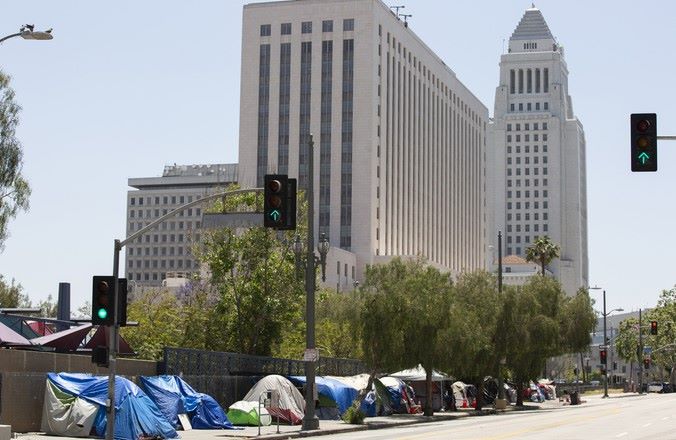At their recent meeting on Monday, October 17, the West Hollywood City Council discussed what policy should be taken regarding rent-stabilized housing units when they are removed via demolition and new housing construction takes their place. They also wrestled with whether a policy put forth by the Planning and Development Department should be immediately adopted, or whether the issue first required more study.
Under a state law passed in 2019 (SB330), new housing projects, “Must replace the units of those demolished so that there is no net loss of units,” said Director of Planning and Development Services, John Keho. In addition, he said the law allows for cities like West Hollywood that offer rent stabilization to choose how it wants some of those units replaced. The law specifically requires the replacement of units for low-income residents to return as deed-restricted affordable units. But state law allows cities to elect how it will apply replacement requirements for protected units that will be demolished and were occupied by moderate and higher level income households but that were subject to a form of rent or price control.
The specific proposal Keho’s department put forward asks that most units be replaced specifically by deed-restricted affordable units. Under West Hollywood’s Development Review Process, building owners are required to report on the income levels of residents of a building. It is through this process that the city would be able to calculate which units were occupied by middle and upper-income residents.
Staff is proposing such action in response to the council’s commitment to getting affordable units built to comply with the city’s requirement by the State Housing and Community Development department’s mandate under the Regional Housing Needs Assessment (RHNA).
“We do have some concerns, however, that there might be some unintended consequences of that,” Keho asserted. “And that is, some projects may not move forward if too many of those units are deed-restricted affordable. “So, in essence, if a project comes out as 40-50-60 percent deed-restricted affordable, maybe that developer will choose not to do that project.”
“You talk about how there may be fewer projects, but there might also be fewer displaced tenants, isn’t that right?” asked Mayor Lauren Meister rhetorically.
“Approve first, ask questions later is a really bad way to make major housing policy,” countered resident Ed Levin. “And this is major housing policy we’re talking about. We’re not talking about replacing rent-stabilized units with rent-stabilized units. We’re talking about replacing market-rate units with affordable units; deed-restricted affordable units. The mayor’s quite right – this will make several development projects economically infeasible.” Later he warned, “We don’t know what effect this will have on RHNA.”
Victor Omelczenko argued the council should adopt the stricter, deed-restricted proposal made by city staff. “The time is now for you to act on this,” he said. “Over the last decade, we’ve lost over one thousand units of rent-stabilized housing.” He later added, “It’s time to implement this replacement to the fullest extent possible.”
Councilmember John Erickson raised the issue of the “Builder’s Remedy” clause that surprised some members of the Santa Monica City Council recently. That city’s inability to design a Housing Element the state was willing to approve triggered a provision that says if a builder is willing to make 20 percent of all units in a proposed development affordable, they have provided a “builder’s remedy” and therefore don’t need council approval to move forward.
This prompted Erickson to ask, “What may be adopted tonight could harm, per the staff report, future development options in the City of West Hollywood to build housing?” Keho said the staff doesn’t have definitive information to that effect, but acknowledged, “That’s a concern we have.”
There were alternatives city staff also provided the council. Alternative One states, “To minimize the likelihood of this policy being a disincentive to development, the policy could require the replacement of the units with deed-restricted affordable units that would result in not more than 35% of the total units in the project being deed-restricted. Any other replacement units would then be subject to rent stabilization requirements.”
Alternative Two reads, “The City Council may alternatively elect that this category of replacement units be replaced with rent-stabilized units in compliance with the City’s Rent Stabilization Ordinance while the city completes the feasibility analysis, and direct staff to return with a resolution making that alternate election.”
“Rent stabilized units starting at today’s market rate prices are not affordable,” argued Mayor Lauren Meister. “We don’t need to analyze this to see if it disincentivizes some development – it will. But I believe that was the state’s purpose to protect existing, rent-stabilized housing that is affordable so that renters paying affordable rents can stay in their homes.” She then went on to question the staff’s assertion that by adopting the proposed policy, West Hollywood wouldn’t meet its RHNA numbers, even going so far as to accuse the staff of moving in a direction designed to replace a number of existing units with new development.
“I’m not a proponent of let’s just stop development, but I do want us to build as many affordable units as possible,” said Mayor Pro Tem Sepi Shyne. “I’m leaning toward Alternative One. I think it’s a good compromise policy right now.” Shyne repeatedly talked about “building more,” acknowledging that sometimes that means “building higher.”
Councilmember John D’Amico, after some prompting, concurred, saying, “I think Alternate One is a good step and a good version of getting to the actual goal which I think has to be the total number of units.”
After clapping back at Mayor Meister for her attacks on staff, Councilmember Lindsey Horvath stated, “To not really have a full understanding or analysis to inform this policy discussion I think is absolutely putting the cart before the horse and punishes the people we asked to bring forward a solution.” She added, “I think this conversation should be happening with a study that informs how we make this decision rather than just pulling numbers out of thin air and determining that that is how we want to proceed.” She seemed to indicate support for Alternative Two with an understanding that they could move to designate more units as deed-restricted affordable after they have a better understanding of the implications for the entire housing stock.
D’Amico then motioned for the passage of Alternative One, plus a study on the matter. It was seconded by Mayor Pro Tem Shyne. It was passed 4-1, with Meister voting no.
Photo Credit to Merkuri2
Stay informed. Sign up for The Westside Voice Newsletter
By clicking submit, you agree to share your email address with Westside Voice. We do not sell or share your information with anyone.








